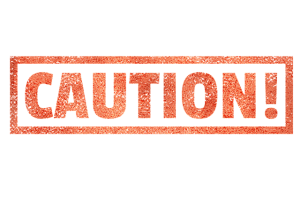Memory Techniques
7 Memory Techniques for Success
Remember Names
One of the most important and basic parts in building rapport is to remember a person’s name. How many of you have trouble remembering people’s name? And isn’t this normally the problem: you look at some body and think “You know what, I recognize your face. It’s your name I forgot.” I’ll bet the opposite has never happened “Bill, How are you doing? I remember your name, it’s your face I forgot.” Dale Carnegie said, “the sweetest sound to an individual’s ear is the sound of their own name.” In fact, one of the greatest compliments you can give a person is to remember their name. After all, “It’s not what you know, it’s who you know.”
body and think “You know what, I recognize your face. It’s your name I forgot.” I’ll bet the opposite has never happened “Bill, How are you doing? I remember your name, it’s your face I forgot.” Dale Carnegie said, “the sweetest sound to an individual’s ear is the sound of their own name.” In fact, one of the greatest compliments you can give a person is to remember their name. After all, “It’s not what you know, it’s who you know.”
Now, there are three reasons people typically get involved with you in business, the third being money. That’s right, money is not number one, it’s number three. The second reason is trust. However, the number one reason people want to do business with you is simply because they like you. Now, if you want people to like you, you ought to remember their name. Let’s say you met someone named John, but you still hadn’t really figured out how to remember names. A couple days later go by, and here comes John walking down the street towards you. You mentally scramble to remember his name but resort to “Hey Pal, how are ya?” Problem number one, John knows you don’t remember his name. Problem number two, you know that John knows that you don’t know remember his name. Now, is this going to make you feel comfortable or uncomfortable? More than likely you’re already off on the wrong foot.
Remembering a person’s name is the quickest way to build rapport. Something to help you remember someone’s name is to repeat it back to them and to check to make sure you have the correct pronunciation. If this person might be a potential client or business partner, ask them to confirm the spelling of their name which will eliminate any errors in future correspondence or emails. It may seem simple or a little overboard, but most individuals will appreciate the effort because their name is very important to them. After you’ve learned their name, be sure to use it often in the conversation to not only assure them that you are paying attention, but also as a way to help you remember it.
Remember to Smile
How important is body language in a conversation? Dr. Mehrabian, Professor Emeritus of Psychology at UCLA, devised a formula that concludes that 93 percent of communication is “nonverbal.” This encompasses not only body language but also vocal manipulation like pitch, tone, and volume. What this means is that your body and your voice are saying a lot more than your words. If you want to be sure you are communicating effectively, you’ll definitely want to pay attention to what your body and voice are saying. The first key to using nonverbal communication to your benefit is remembering to smile.
also vocal manipulation like pitch, tone, and volume. What this means is that your body and your voice are saying a lot more than your words. If you want to be sure you are communicating effectively, you’ll definitely want to pay attention to what your body and voice are saying. The first key to using nonverbal communication to your benefit is remembering to smile.
When I was back in grad school getting my Master’s Degree in Communications one of my professors pulled me aside and said, “Bob, you’re going to have to make an effort to smile more because your neutral face looks like you’re ticked off.” Without realizing it I was unknowingly communicating something that was far from the truth. As a result, I’ve had to make a greater effort to smile more.
Well, while your resting face might not be as aggressive as mine, remembering to smile will also help align the rest of your body language. It’s hard for your body to appear confrontational while you are genuinely smiling. A smile not only puts your audience at ease but also releases dopamine and serotonin in your brain which induces a feeling of happiness. Take a moment, right now, and smile. Your smile doesn’t only affect your body language, but will also help you control the pitch, tone, and volume of your voice. A smile is definitely essential towards building rapport and communicating effectively.
Remember to Listen
Another important item in building rapport is to ask yourself how good are you at listening? Be honest. When somebody is talking to you, are you actually listening without already passing judgment? Or do you find yourself quickly caught up in thinking about what you are going to say next? If your mind is f iring off in all directions, you won’t be able to pay attention or be a good listener. When you stop focusing on the connection between you and whoever is talking and instead focus on what you are going to say next, the connection begins to weaken until eventually, it breaks down. Have you ever been talking when someone jumps onto what you are saying so you respond by jumping onto what they are saying and it goes back and forth? How effective was that conversation?
iring off in all directions, you won’t be able to pay attention or be a good listener. When you stop focusing on the connection between you and whoever is talking and instead focus on what you are going to say next, the connection begins to weaken until eventually, it breaks down. Have you ever been talking when someone jumps onto what you are saying so you respond by jumping onto what they are saying and it goes back and forth? How effective was that conversation?
What if instead you asked a question and rather than planning your next response you decided to let yourself be there for the person and you simply listened? Once they’re through talking, before you say anything, pause. Pause for two or three seconds, maybe more. Many times you’ll discover that the person had more to say and they’ll continue to talk some more. When they are really done, you pause – and in that pause you include a brief reflection – naturally another question or comment will bubble up to move the conversation forward.
To help you understand all of this I’ll give you an example. Before I recognized the importance of any of this, I would meet someone for the first time and there would be bantering back and forth with the occasional one-upping, but typically nothing much more than this. Whereas with many of the people I now know I can sit down with them and simply listen. In some cases, they’ll talk for 30-40 minutes but after our visit, they have told me that they just divulged more to me than anyone else in their life; they can’t believe the closeness or the level of connection. I have seen it work multiple times in my life.
Because I think Listening is so important to building rapport and deepening relationships, I want to introduce to you something I once learned called The Power of Pause.
The Power of Pause
As we discussed previously, many times while someone is talking your busy coming up with the second half of a sentence or you hear something and you immediately want to respond. Here’s an example: Disneyland, the happiest… Most people are quick to respond “place on earth.” However, that’s the automatic response. What if instead, you went: Disneyland, the happiest… and you pause. You reflect. Instead of the first thing that comes to mind, you’ll think “Oh, I remember the happiest time I had at Disneyland was when I took my kids there for vacation when they were all still little…” See how a simple pause led us down a different track?
Instead of just reacting to a situation, how about pausing? Even with members of your own family. I was once driving down the freeway on the day my little girl learned how to get out of her car seat all by herself. Isn’t that a great day in the life of a parent? Now, to give you some insight into my sweet little daughter, I remember when she was a baby I was holding her in my arms and looking into her eyes and she was gazing at me with this defiant look as if she was saying “I’m smarter than you are.”
Well, driving down the freeway, she hops out of her car seat. I respond “Get back in your car seat.” I look in the rearview mirror and see her staring at me, her expression clearly saying “Yeah right.” Now I start to get a little upset. “Get back in your car seat or else.” I glance back in the rearview mirror and she is looking at me like “bring it on.” I impulsively react. I pull the car over to the side of the freeway and get out of the car. “I know how to solve this, ” I tell myself. “I’m bigger than she is. We’ve done this a thousand times before, we can do it again.” Suddenly I stopped, and I paused. I thought, “Okay, what might be a better solution than the one I’m thinking of right now?” In that pause, I just sat there, with no judgment and waited to see what bubbled up. A thought came into my mind, “Give her a hug.” My initial response was “Yeah right like that’s going to work” but then I realized, “Well, nothing else has ever worked.” Deciding to test it out I went over to the other side of the car and I opened up the door to find her standing there, ready for yet another fight. This time, instead of fighting with my daughter, I put my arms out and calmly said: “Come give Daddy a hug.” The result was I got to watch her melt before my eyes. She ran to the car, jumped into my arms, put her little arms around my neck, and began to sob uncontrollably. Now, do you think a connection was being made there? When she was done crying I asked if she was ready to go home and she replied that she was. We didn’t have another problem all of the way home. Do you think the outcome was worth the brief pause?
The Power of Pause teaches us not only to listen to what others are saying, and maybe to consider what they are not saying, but also to give time to listen to what you are saying.
Remember the Communication Danger Signs

Let’s go over a few communication danger signs that you can keep an eye out for whether you are talking with a friend you’ve had for years, a spouse, a child, or someone that you’remeeting for the first time.
I call it the W-I-N-E.
W – The “W” stands for withdrawing. When you see someone begin to withdraw, that’s a danger sign for your relationship and your connection. If someone begins to withdraw, ask yourself what it is that is making this occur. If you are arguing, ask yourself honestly if the argument is w
orth ruining your temporary connection and perhaps your long-term connection. Remember the power of pause and apply it in these cases and you’ll be amazed at how instead of withdrawing away from you, you’ll draw people in closer and it will improve your life.
I – The “I” stands for invalidation. In other words, while the person is saying something you are busy looking at your watch or checking your phone or maybe you simply ignore what they said and you respond with something totally unrelated. Have you ever been talking to someone when, mid-sentence, they pull out their phone and seem to completely lose interest in what you’re saying? Sure, they may have the courtesy to offer the occasional confirmation that they at least remember that you are still standing in front of them, but their focus is elsewhere. How many times are you guilty of not being there when someone is trying to talk with you? Put your phone and any other distractions away and give your full attention to the person talking and you’ll be astounded at your connection’s improvement.
N – The next letter, “N,” is what is called negative interpretation. Have you ever gotten a text, or maybe sent at a text and the other person sees it in a negative way? A great example is when someone comes home late. You could look at it and initially think “Oh, there must be a lot of traffic out there” or the negative interpretation would be “This person just doesn’t care about me and was obviously late on purpose.”
Negative interpretation can often lead us to pass quick judgments, often without hearing everything a person had to say or investigating into what’s below the surface. Did you know that judgment is a connection killer? Let me give you an example: A man is walking through the woods and he sees a beautiful dog. He thinks “Oh, what a nice looking dog” and excitedly reaches out to pet him. The dog snarls and tries to bite him. What’s the man’s immediate reaction? “Bad dog. I don’t want anything to do with this dog, I’m out of here.” Right? Another guy comes walking up, but he knows a little bit about the power of pause. “Wow, what a nice looking dog.” He’s reaching out to pet him when the dog lunges forward, snarls, and tries to bite him. He steps back and pauses thinking, “Let me see if I can understand?” and in those moments he notices that the dog’s paw is caught in a trap. No wonder the dog is snarling and lashing out.
Now, I have a question, how many of you have been in a relationship, known people, been in business, or maybe met someone for the first time and they lashed out? Did you immediately react, pass a quick judgment, and let a negative interpretation kill what perhaps could have been a business deal or a relationship that may have gone on for who knows how long? Instead, what if you took a step back, paused and asked, “Let me see if I can understand?” Because if someone is lashing out, aren’t they really communicating that they are in pain or that something is going on with them? It’s not you. By not getting caught in a negative interpretation you empower yourself and leave the door open for opportunity. Maybe your pause will allow you to become a better friend and help them ride out whatever is going on. Wouldn’t that build a deeper connection?
E – The last one is the E for escalation. This is where you can feel the emotion is building and you are getting madder and madder and the connection is starting to break. This often happens when you aren’t talking face to face as with texts. I call this “Texting Armageddon.” When you see this happen, take a pause, wait until the emotions settle, and then readdress the issue. Don’t be afraid to politely change the subject or to excuse yourself until the conversation becomes less emotionally charged. Be a leader and take the blame by admitting that you are getting a little too riled up and would rather wait to discuss the topic or return to it at a later time.
An example of escalation occurred in my life several years ago. I had built a business around teaching memory to audiences around the country. Business was booming and I had life by the tail. My best friend from college had joined me working on the business. One day this friend of mine broke into my home, took some things, and destroyed my business. Would you be mad? It was the first time in my life I hated someone. To say that things were beginning to escalate is an understatement. I had evidence that he had broken into my home, I was going to press charges, and boy was I going to nail him. I was ticked. Well, I began to notice something else, I couldn’t sleep at night and I couldn’t stop thinking about him. I eventually went to my older, wiser mentor and I told him “I don’t get it. He did this to me so why do I feel so bad?” He thoughtfully asked me a question, “If you press charges, will that get your business back?” I responded, “No, the damage has already been done.” He asked, “So why are you pressing charges?” I replied “You’ve got to be kidding me?! Somebody’s got to make him pay. Somebody’s got to make it right.” At this point, he interrupted me, “Hold on. That’s revenge. Revenge is taking poison and hoping the other person dies. If you carry this it will continue to destroy you. Let it go. I promise you if you’ll let this go and focus your energy on what’s in front of you great doors will open.”
Is that a hard thing to do, let it go? It was a terrible struggle for two weeks. Finally one day I started thinking about some of the great things my friend had done for me and I eventually called him up and said “Hey listen, I’ve decided to drop all the charges. I wish you the best of luck. I gift you the business.” My friend, thinking something was up, asked: “What is it you really want?” I sighed and told him “Geez. You know what I really want? I just want my friend back.” Now, there are people that told me I was an idiot for doing that. In business, we learn that if someone messes with you, you crush them! I’ll tell you why I disagree , when I hung up the phone that day a giant weight was lifted off my shoulders.
One year later something very tragic happened, my friend was killed on impact in a car crash. The first thought in my mind was “Aren’t you glad you let it go?” While this example is definitely extreme, and I sincerely hope that you don’t have to experience something this drastic to learn the lesson I did, don’t you agree that it’s better to not let things escalate and rather to let things go. Not only will you be able to move on and return to being happy, but you’ll avoid the terrible pangs of regret if you never get the chance to right a wrong.
Remember to be Genuine
The last of the five principles is to be genuine. To deepen a relationship or build greater rapport, recognize that many times individuals have walls up because they are wondering what it is that you truly want. Well, what if you could set up an atmosphere where you don’t want anything? You’re just there to be with the other person. How would anyone know that that’s genuine or authentic? By becoming genuine or authentic.
For instance, how about revealing something from your past, with no expectations. You aren’t digging for information or hoping to uncover any secrets, you’re just stating that you’d like to share something about yourself. For instance, I speak on stages across the country and I can show me speaking to 30,000 people in the Georgia Dome and it looks really cool. You know what the problem is? People don’t know the rest of the story. I had a series of events that happened 4 years ago that when I was finished speaking I would walk off that stage, go back into the green room, and I would collapse into a massive, ridiculous panic attack. I didn’t know where it came from. Now, most motivational speakers would never admit to that. “No, I’m perfect. I’ve got my life all in order.” Well, I’m not and I don’t. I went back there and I collapsed. It got progressively worse month after month to where I reached a place that I would look at the clock and say, “It’s 3 o’clock. How will I last till 4?” Now, when I share that story about myself to an individual or to an audience, what just happened to all of the walls? They all dropped because I revealed something authentic about me and I am simply laying it out there. Is there a risk? Yes, there’s a risk. However, being a leader and taking the first steps into vulnerability is what being a leader is all about; taking that risk. Always remember to be genuine, to be yourself.
Remember the Takeaways
Now, I have taught memory to tens of thousands of college students, teachers, business professionals, and many more, and I want to help you easily remember the 5 takeaways from this chapter. To help you remember them, we are going to “attach” each item to your body. Let’s start with your head. Remember, we want to call people by their name. Picture a giant name tag pinned to the top of your head. That image should really stick with you. Now, move to your forehead. On your forehead I want you to draw a big smiley face complete with two little eyes. From your forehead let’s go to your eyes. Envision two big ears that are in your eyes to help you remember to listen. If you have a habit of monopolizing a conversation make the ears sufficiently large so that you’ll remember to listen more than you talk. Move your eyes down to your nose and we’ll remember W-I-N-E. Remember our communication danger signs? To remember W-I-N-E I want you to stick a bottle of wine up your nose and pour it down. That ought to get your attention. W-I-N-E once again is withdraw, invalidation, negative interpretation, and escalation. It’s important to not only recognize when one of these danger signs occurs but to use the Power of Pause to overcome the disconnection. The last point is to remember to reveal your authentic, genuine self. Go to your mouth and reveal your teeth. You are displaying your teeth just like you’ll display your true self in conversation. Let’s review from the top down. Name, smile, listen, recognize communication danger signs, and finally be yourself.
Learn How to Build Your Ultra Memory with Bob at Udemy
Have you seen Bob’s One Minute with Bob series of videos?